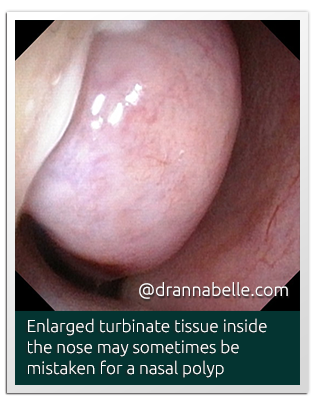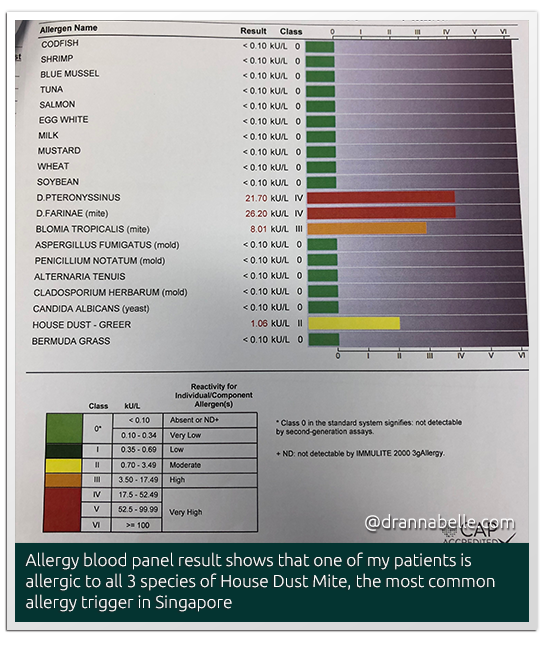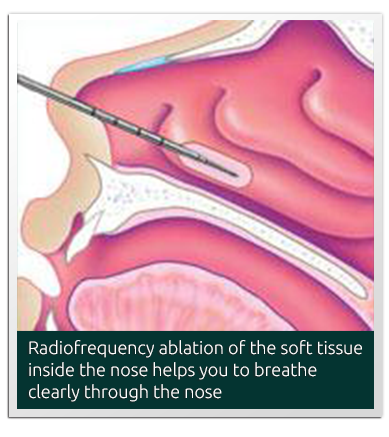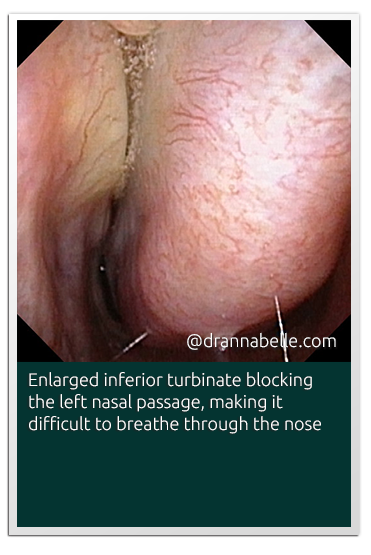Allergy (Sensitive Nose)
Allergy problems of the nose are extremely common and typically present with:
- Sneezing
- Itchy nose
- Watery eyes which may become itchy and red
- Persistently runny nose
- Blocked nose
All these symptoms can disturb your quality of life so that you find it difficult to sleep, study and work well. Many patients think they are suffering from “sinus” problems but they actually turn out to be bothered by allergy symptoms instead. It is important to distinguish between “sinus” and “allergy” conditions because the treatment for each is different. Allergy problems of the nose are also frequently called “hayfever”.

What causes allergy problems of the nose?
Allergy problems usually result from “over-sensitivity” of the lining of the nose, when it is exposed to certain substances such as pollen and dust. The immune system reacts in an exaggerated and aggressive manner towards these substances, leading to a buildup of special immune cells called mast cells. Mast cells release large amounts of chemicals which in turn cause the soft tissue inside the nose (the turbinates) to swell up and the mucus glands to produce a lot of secretions, giving rise to the symptoms of blocked nose and runny nose. Itchy nose and watery eyes may also result.
How are allergy problems of the nose treated?
- Identify the triggers (causes) which are leading to allergy flare-ups.
- Medication: Saline nasal wash + Nasal steroid spray + antihistamine
- Treat and relieve nasal blockage/congestion
- Consider a role for desensitization therapy which may offer a permanent cure.
A. Identifying the triggers (allergens)
Allergy testing can be performed to find out what you may be allergic to. This may be done as a skin prick test or in the form of a blood test. Both are probably just as good but the skin prick test usually only tests for 8-10 potential allergens. The blood panel can screen for up to 46 different types of allergens, including those found in food.

B. Medication
The trio of saline nasal wash (douche), nasal steroid spray and an antihistamine tablet/syrup usually helps control many cases of allergy problems in the nose. But there are many different types of medication in each category available so to avoid confusion, it is best to be guided by the ENT specialist. Some nasal sprays also contain both steroids and antihistamines so that you don’t have to take any medicine by mouth in tablet form.
C. Treating the nasal blockage
Sometimes, no matter how long or how much medication is taken, nasal congestion still persists, making it difficult and uncomfortable to breathe through your nose. In such cases, reducing the size of your enlarged swollen soft tissue (called the turbinates) inside the nose will help you to breathe clearly through the nose again. The turbinates are long “sausage” shaped structures inside each nasal passage. There are 2 main techniques:
- Radiofrequency Ablation of Inferior Turbinates (RFIT)
- Turbinoplasties
RFIT
RFIT is a safe, short and painless procedure which may be done as a daycase procedure under local anaesthesia. A special instrument is inserted into the nose and a low electric current is passed through the swollen soft tissue of the turbinates to shrink it. Initially, in the first week, there may be temporary swelling of the soft tissue so the nose may continue to feel congested for a while. As healing occurs, the soft tissue starts to reduce in size so that optimal results are usually noticed around weeks 3-4 after RFIT. Sometimes, there may be crusting or formation of dry scabs inside the nose so usually, my patients are advised to wash their nose out daily with a saline nasal douche for the first month. Occasionally, the turbinate tissue may regrow at around 18-24 months after RFIT so some patients may return to undergo RFIT a second time.

Turbinoplasties
Turbinoplasties are different from the RFIT procedure because they aim to provide a more definitive longterm method of reducing the swollen turbinate tissue. Here, part of the inner core of turbinate bone is carefully removed whilst preserving the delicate layer of nasal lining. As it heals, the nasal lining becomes scarred and stays reduced in size without the inner bone structure to add volume. It is an effective procedure which is commonly performed together with a septoplasty (straightening the deviated or crooked nasal septum). However, it is done under general anaesthesia. There is a slightly higher risk of bleeding compared to RFIT, so patients stay overnight in hospital with special nasal sponge packing inside their nose. This nasal packing is removed the next day and patients are discharged home from hospital.


D. Desensitisation therapy (sublingual immunotherapy)
Desensitisation therapy aims to tame and calm down the immune system so that it doesn’t react in such an aggressive manner towards certain substances (allergens). Currently, there are 2 main types of sublingual immunotherapy available on the market, for grass (Grazax) and house dust mite (Acarizax). Both involve taking a tablet daily, placing it under the tongue to allow it to dissolve in seconds. The main drawback is that you have to keep taking this medication for up to 3 years before you achieve longterm control of your allergy condition to be able to stop using the nasal sprays and antihistamine medications. But many patients notice an improvement in their symptoms at around 14 weeks after starting desensitisation therapy. Occasionally missing a dose here and there won’t affect the overall outcome of treatment either.







